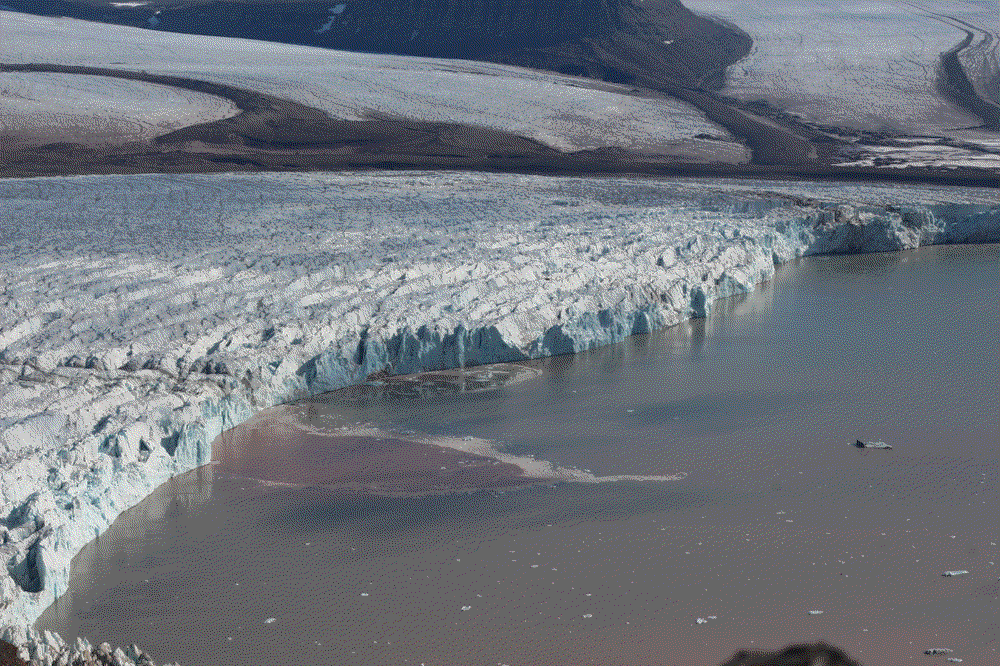PhD update: May 2016
May has been a varied month beginning with returning from Svalbard. The fieldwork in Kongsfjorden was very successful, with 12 time-lapse cameras deployed at various glaciers in the area to monitor their dynamics till September 2016. No rest for the wicked when I made it back to Edinburgh though as I had to prepare for a very impromptu trip to Tromsø and present findings from the fieldwork and talk about submarine plume dynamics. Luckily for the last week of May I have been settling back into the office in Edinburgh enjoying good company and incredible weather.
The month began in Svalbard... this seems to be a running theme of most of my monthly blog posts - I begin the month in Svalbard and also end the month in Svalbard. Luckily this month is slightly different. I am not planning on going back to Svalbard till at least late July/August now so I have plenty of time to enjoy Edinburgh, which is gloriously sunny at the moment.
The fieldwork in Svalbard went very smoothly, successfully installing 12 time-lapse cameras at three glaciers in the Kongsfjorden area - Kronebreen, Kongsvegen and Kongsbreen. The installations at Kronebreen have been well documented in a separate blog post which can be viewed here. Photos from the fieldwork were also featured on GlacierHub, a site dedicated to communicating scientific research in glaciology.

Sun, sea and snow in Tromsø during my visit to Norsk Polarinstitutt (May 2016)
After the installations in Kongsfjorden, it was hoped that we could visit our time-lapse cameras at a tidewater glacier called Tunabreen, which is a short snow scooter journey/boat ride from Longyearbyen, the main Norwegian settlement in Svalbard. We installed four cameras at Tunabreen last summer and intended to collect data and service them in March. Lack of sea ice limited our access to the glacier during the time though. Unfortunately a weather window didn't open up this time round, so those cameras will have to be left for a while longer.
After being back in Edinburgh for a week, I had the opportunity to visit Norsk Polarinstitutt and present our observations of submarine plumes from our time-lapse images. Norsk Polarinstitutt is Norway's governmental institution for scientific research in the Arctic and the Antarctic, which is based in Tromsø on the north coast of Norway. I've never been to Tromsø. It is a beautiful place and I would definitely recommend going - especially in the winter for skiers. The settlement is surrounded by sea and mountains, very well-suited for those who want the city life but also want the outdoors close by.
I was invited to talk about glacier activity and submarine plumes in the Kongsfjorden area as part of Norsk Polarinstitutt's efforts to better understand the impact of glacial systems on fjord dynamics and ecological activity. Glacier meltwater is generally routed through a glacier via large channels at the glacier bed. This meltwater exits the glacier either as proglacial streams in land settings, or as submarine plumes in tidewater settings. In tidewater settings, the meltwater rises when it meets the salty fjord water because of the difference in density (due to the difference in temperature and salinity). This plume entrains sediment and additional surrounding water, which forms a visible boundary if the plume reaches the surface of the fjord.

An example of a submarine plume reaching the surface of the fjord water. This example is from Tunabreen, Svalbard, a slow-moving glacier that terminates into a large fjord system called Tempelfjorden. Note the colour difference between the plume and the surrounding water due to the difference in sediment content (August 2015)
This is not only an important process to understand in glaciology, but also has a large influence on fjord circulation and provides a rich feeding ground for birds, seals and whales as the difference in salinity stuns small living organisms in the water. Our time-lapse cameras have been monitoring the submarine plume at Kronebreen glacier, and it is hoped that the spatial extent of the plume can be linked to ecological activity, specifically the presence of Kittiwake birds and Beluga whales in the Kongsfjorden area. This is an exciting interdisciplinary collaboration which I am so happy to be a part of. Beforehand, I never considered the significance of my time-lapse photography work beyond the reaches of the glaciology community. Hopefully something really interesting and meaningful can come from this.
And finally I end this month in Edinburgh. Work has taken a back seat as it is so warm and sunny here at the moment. Next month I intend to spend a lot of time staring at a computer screen as we begin the first implementation of PyTrx, the software we have been developing to automatically feature track glacial points through image sequences. This will be the first full month that I will spend in one place this year. Let's hope I don't get itchy feet.
